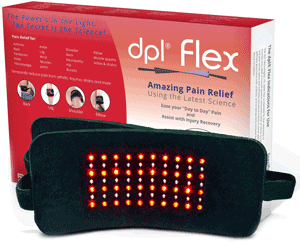Probably not something you’ve ever heard of unless you’ve had acne for a very long time, and spent sufficient hours Googling around the subject. I certainly hadn’t until a couple of years ago, eight years into my acne struggle.
But it’s important you know about Seborrheic Dermatitis (I’m just going to call it “Seb Derm” from here on, since it saves the typing) because after my failed attempts with industrial quantities of far too concentrated Benzoyl Peroxide for my acne, I was left with this condition and still have it on occasion to this very day.
And the problem is seb derm can look very similar to acne in a number of ways, unless you know what you’re looking for. The treatment, however, is remarkably different and can even be contradictive of acne advice.
Have you ever considered you don’t actually have acne, but something else?
What if that’s the reason that conventional (and my own particular brand of unconventional) acne treatments never work for you?
——————–
What is seb derm?
Seborrheic dermatitis, in a nutshell, is dandruff of the face.
However, for those of you for whom this is not sufficient detail, a better definition is:
“Seborrheic dermatitis is an inflammatory skin condition which affects the scalp, face and torso.”
Notice the words in bold type and the similarities with acne already – another skin condition which involves inflammation and appears on the face, torso and occasionally scalp.
I will forgive you if you turn out to be one of those people who have mistakenly diagnosed themselves with acne when it’s really seb derm, since I am also guilty of this. Note however, that you might also be unlucky (like yours truly) and have both acne and seb derm at the same time.
Life sure can suck, right?
What causes seb derm?
It is not really known definitively what causes seborrheic dermatitis, but current thinking is that it is associated with the presence of the yeast Malassezia furfur (also M. globosa and M. restricta to lesser extents). The yeast cells produce toxic substances which aggravate and inflame the skin. In an over-simplified way, this causes a sort of allergic reaction.
Everybody has Malassezia yeast on their skin (including most species of mammal) and one of the great mysteries of seb derm is why some people react to it and others don’t. Theories include a weakened immune system, nervous system issues and nutrient deficiencies (commonly zinc, vitamin B6, biotin and riboflavin).
The yeast live off sebum, and specifically off the fatty acids which make up sebum. This explains why symptoms tend to occur in oily areas of skin (see below) and also gives one route to treatment – minimising the skin’s oil production.
Current thinking around how Malassezia induce a seb derm reaction is as follows:
- Malassezia yeast break down human sebum into a mixture of saturated and unsaturated fatty acids
- They use the saturated fatty acids as food, leaving unsaturated fatty acids on the skin
- These unsaturated fatty acids, being “foreign” to the skin, disrupt the usually protective acid-mantle layer and irritate the outer layers of skin, leading to redness, acne-like pimples, a nd flaky dandruff.
Of course, as with acne, genetics, hormones and environment (especially cold weather) can all play a part.
Typical signs and symptoms
Typical symptoms of seb derm are red, scaly or oily areas of skin which flakes and itches. That’s the best way to describe it, anyway, although it can differ from person to person. As mentioned, it tends to afflict the sebaceous, oily areas of skin.
Usually, the worst-affected areas on the face are the “naso-labial folds” (which are the greasy bits by the side of your nose), the temples, behind the ears, in the area between your eyebrows (the “monobrow region”) and around your mouth and chin.
These areas may look red, inflamed, and are often covered by oily “scales” of dead skin which can be anything from grey to yellow to brown in colour. These scales can be removed physically but gently washing with water alone is unlikely to get rid of them.
This can also cause pimples to form in a very similar way to acne; constricting and blocking pores with inflammation and an over-production of sebum.
Seb derm sufferers are also very likely to have dandruff, since the scalp is often where seb derm originates before spreading to the face and torso. If you are constantly scratching your head (and are not doing so because you are perpetually confused) and then touching your face it’s easily spread and seb derm might well be your problem. Hair loss is also associated with seb derm and is certainly one I experienced around the hair-line – luckily, women find baldness sexy so this isn’t a problem…
This is another reason seb derm is commonly misdiagnosed – redness, inflammation, pimples and skin flakes (thought to be “dry skin” rather than dandruff) are all symptoms of a much better-known skin condition: good old traditional acne.
How do you tell seb derm from acne?
I used to watch House, M.D. and thoroughly enjoyed it. If you haven’t seen it, it centres around a sociopathic, disabled doctor (played exceptionally well by Hugh Laurie) and each episode starts with a person experiencing some mysterious illness. Things like randomly bleeding from the eye, or some rapidly-spreading rash followed by fainting, or suddenly speaking in a foreign language.
Dr. House, at the fictional Plainsborough Teaching Hospital in New Jersey, is one of the top diagnosticians in the world, and when the case had confounded most other experts it would end up on his desk. He and his team (who he messed with mercilessly) would then make around two to three wrong guesses before some random, throwaway statement would trigger House’s thought processes and he would storm off and cure them. Happened this way almost every time and never got predictable.
The real-life method behind House’s work is Differential Diagnosis (shortened to “DDX”) and essentially, you make a list of all of the diseases which fit the symptoms and then rule them out, one by one.
So how do you DDX your skin condition? It is hard to tell the difference between seb derm and acne, but start by ticking off the following symptoms:
- Does it itch? Yes = SD, No = Acne
- Do you have excessively oily skin? Could indicate SD or hormonal acne and if not, unlikely to be SD, could be acne caused by dry skin
- Do you have dandruff? Yes – indicates SD
- Is the skin by your nose, temples, chin and between your eyebrows red? If yes, could be SD
- Does your “acne” appear on these areas? Or on your upper or lower cheeks and forehead? Acne-like pimples are common in SD-affected areas, whereas traditional acne is more common on the cheeks, jawline and forehead.
- Is your acne cystic, or more commonly whiteheads? Cystic acne is not SD, whereas whiteheads and small red pimples are symptoms of SD
- Does it get better if you apply a topical anti-fungal dandruff shampoo? If so, very likely to be SD.
Also, get a doctor or dermatologist to take a skin sample and confirm or rule out SD for you.
So, can it be cured?
Now that you might have a better idea what you’re dealing with I’ll give you the bad news straight: In a word, no, it can’t be cured.
But don’t worry at all – if you get diagnosed with seb derm, just relax, because it’s perfectly (and relatively easily) treatable.
Make no mistake though – treatment is required. This is not a suitable condition for attempting any type of Caveman Regimen approach, since it won’t go away without treatment and if left unchecked, may only spread and get worse.
I’m including a lot of different treatment ideas on this site, so won’t go into too much detail here, but the salient points are:
- Keep a clean scalp and face – including short hair and daily shaving. Impeccable hygiene is very important. Some report that SD disappears entirely from the scalp and face after shaving their hair off, since this is a “reservoir” for the yeast.
- Use an over-the-counter dandruff shampoo on the scalp and face. Try Nizoral (available on Amazon here).
- Nizoral is excellent, otherwise try Head-and-Shoulders if you must. Lather and applying to a wet face for 3-5 minutes before rinsing off.
- Take cold showers and vitamin D to reduce oily skin, which Malassezia feeds off
- Immediately stop using any sort of moisturiser, since the Malassezia can also feed off the oils present in face creams.
- Clean up your diet to a low carb, higher-fat diet and avoid sugar and yeast (bread and beer, sadly) – some people say this helps, others not.
- Get tested for the main vitamin and mineral deficiencies.
- Change your pillow case at least once a week if not more frequently.
- Get outside – even 12 minutes of direct sunlight a week can be sufficient UV radiation to kill Malassezia and alleviate symptoms.
I’ll expand on each of these in a separate post, but above all, keep the faith and don’t give up.


